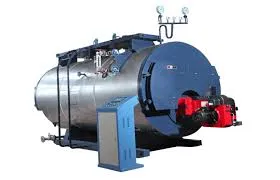
11-р сар . 17, 2024 12:27 Back to list
Optimizing Hot Water Circulation in Steam Boiler Systems for Enhanced Efficiency
Understanding Steam Boiler Hot Water Loops
Steam boilers play a crucial role in various industrial and commercial applications, providing heat and hot water for a multitude of processes. One of the most pivotal systems that utilize steam boilers is the hot water loop. This article will explore the intricacies of steam boiler hot water loops, their advantages, applications, and some best practices for maintaining their efficiency.
What is a Steam Boiler Hot Water Loop?
A steam boiler hot water loop is a system that facilitates the circulation of hot water generated by a steam boiler. In this process, water is heated in the boiler to generate steam. As steam travels through the system, it can transfer heat to another water loop, including radiators, heating coils, or directly to certain industrial processes. The water, once heated, either circulates back to the boiler to be reheated or can be drawn off for various applications.
Advantages of Using Hot Water Loops
1. Energy Efficiency Using a hot water loop allows for better energy management. The system can effectively distribute heat to various points within a facility without significant energy loss.
2. Versatility Hot water loops can serve multiple functions, from space heating to providing hot water for processes in a manufacturing plant. This versatility makes them suitable for various applications, including residential heating, commercial buildings, and industrial operations.
3. Comfort In residential settings, hot water loops can provide a consistent and comfortable indoor climate. Radiant floor heating systems are a good example where warmth is evenly distributed across the space.
Applications of Steam Boiler Hot Water Loops
steam boiler hot water loop

Hot water loops powered by steam boilers find application in many sectors. In the residential sector, they are often used for central heating and domestic hot water supply. In commercial buildings, they provide heat for spaces while also catering to hot water demands in kitchens and restrooms.
Industries, particularly those in manufacturing and food processing, utilize hot water loops to maintain ideal temperatures for production processes. Additionally, they are key components in hospitals and laboratories, where precise temperature controls are crucial for safe and effective operations.
Best Practices for Maintenance
To ensure your steam boiler hot water loop operates efficiently, regular maintenance is essential. Here are some best practices
1. Regular Inspections Schedule regular check-ups to identify and rectify issues before they escalate. This includes checking valves, pumps, and piping for leaks or wear.
2. Water Treatment Implement a water treatment program to minimize scale build-up and corrosion, which can significantly affect the performance of the boiler and loop.
3. Temperature Management Regularly check the temperatures of the water in the heating loop to ensure they are within the optimal range for your specific application.
4. Insulation Insulating pipes can reduce heat loss, leading to improved efficiency and lower energy costs.
Conclusion
Steam boiler hot water loops represent an efficient and versatile solution for heating and hot water supply in various settings. Understanding their operation, advantages, and maintenance practices is crucial for optimizing performance and ensuring longevity. Whether in a residential, commercial, or industrial context, these systems play an integral role in our daily lives, highlighting the importance of effective heat management.
-
Best Steam Boiler Design PDF Free Design Calculation & Diagram Downloads
NewsJun.10,2025
-
Hot Boiler Water Heater Efficient Heating Solutions for Home & Commercial Use
NewsJun.10,2025
-
Steam Boiler Safety Devices High-Quality Protection Valves
NewsJun.10,2025
-
Ultimate Steam Boiler Checklist for Safety & Efficiency
NewsJun.10,2025
-
Optimal Hot Water Boiler Temperature Setting Guide
NewsJun.10,2025
-
Effective Hot Water Boiler Chemical Treatment Protect & Maintain
NewsJun.09,2025
Related PRODUCTS






















